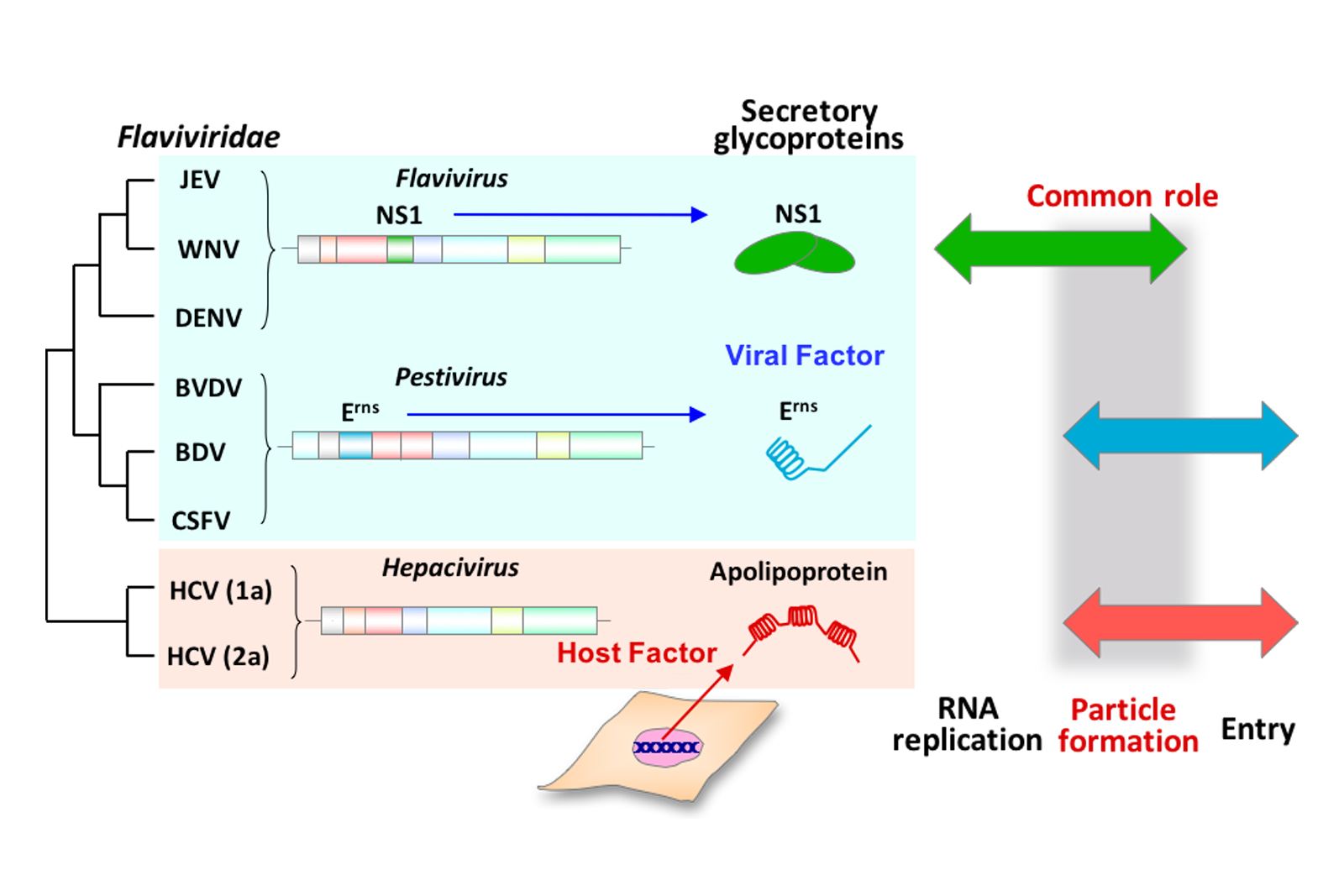Host-derived apolipoproteins play comparable roles with viral secretory proteins Erns and NS1 in the infectious particle formation of Flaviviridae (Matsuura Lab, in PLoS Pathogens)
Amphipathic α-helices of exchangeable apolipoproteins have shown to play crucial roles in the formation of infectious hepatitis C virus (HCV) particles through the interaction with viral particles. Among the Flaviviridae members, pestivirus and flavivirus possess a viral structural protein Erns or a non-structural protein 1 (NS1) as secretory glycoproteins, respectively, while Hepacivirus including HCV has no secretory glycoprotein. In case of pestivirus replication, the C-terminal long amphipathic α-helices of Erns are important for anchoring to viral membrane. Here we show that host-derived apolipoproteins play functional roles similar to those of virally encoded Erns and NS1 in the formation of infectious particles. We examined whether Erns and NS1 could compensate for the role of apolipoproteins in particle formation of HCV in apolipoprotein B (ApoB) and ApoE double-knockout Huh7 (BE-KO), and non-hepatic 293T cells. We found that exogenous expression of either Erns or NS1 rescued infectious particle formation of HCV in the BE-KO and 293T cells. In addition, expression of apolipoproteins or NS1 partially rescued the production of infectious pestivirus particles in cells upon electroporation with an Erns-deleted non-infectious RNA. As with exchangeable apolipoproteins, the C-terminal amphipathic α-helices of Erns play the functional roles in the formation of infectious HCV or pestivirus particles. These results strongly suggest that the host- and virus-derived secretory glycoproteins have overlapping roles in the viral life cycle of Flaviviridae, especially in the maturation of infectious particles, while Erns and NS1 also participate in replication complex formation and viral entry, respectively. Considering the abundant hepatic expression and liver-specific propagation of these apolipoproteins, HCV might have evolved to utilize them in the formation of infectious particles through deletion of a secretory viral glycoprotein gene.
This article is published in PLoS Pathogens, June 23 2017.
Host-derived apolipoproteins play comparable roles with viral secretory proteins Erns and NS1 in the infectious particle formation of Flaviviridae
PLoS Pathogens, https://doi.org/10.1371/journal.ppat.1006475
Links
- Home
- Achievement
- Research Activities
- Host-derived apolipoproteins play comparable roles with viral secretory proteins Erns and NS1 in the infectious particle formation of Flaviviridae (Matsuura Lab, in PLoS Pathogens)








